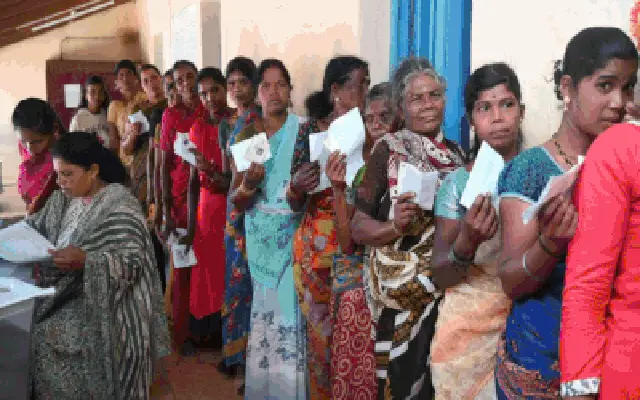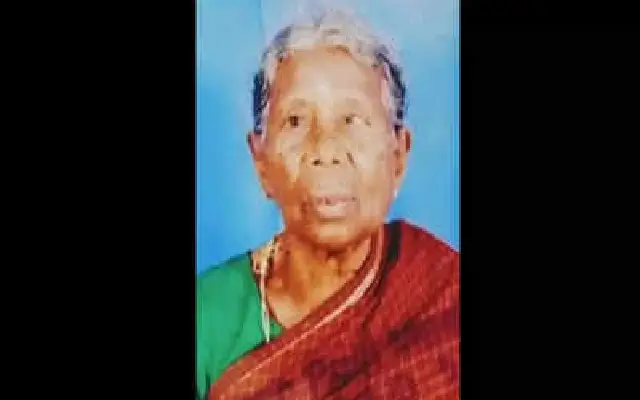Udupi: It was Shesha Sherigar who hoisted the then national flag for the first time atop the Anantheswara temple in Udupi in 1942. The flag was aflutter for a week. This inspiring act of patriotism was referred to in the ‘Swathantra Sangramatha Smruthikalu, by Educationalist Suryanath Kamath’ and explained by Durga Das, son of Shesha Sherigar.
 Elaborating on the inspiring movement that led to the hoisting of the flag for the first time, Vinith Rao, the person in charge of the Gandhian center at the MGM college told NewsKarnataka that, even though Udupi was a small city, rather a small town then, the youth were very enthusaistic about the freedom movement. “The youth were determined to hoist the Indian flag in the year following Gandhiji’s call to the British to ‘Quit India’, despite its prohibition”.
Elaborating on the inspiring movement that led to the hoisting of the flag for the first time, Vinith Rao, the person in charge of the Gandhian center at the MGM college told NewsKarnataka that, even though Udupi was a small city, rather a small town then, the youth were very enthusaistic about the freedom movement. “The youth were determined to hoist the Indian flag in the year following Gandhiji’s call to the British to ‘Quit India’, despite its prohibition”.
The then youth group including Santhara Ananth Padmanabha Bhat, Pangal Manjunath Nayak, Manoramma Bhai, Dr. R.S Shenoy, and Vital Kamath (father of Late M.V Kamath) first decided to hoist the then National flag (congress flag) on the top of the wooden chariot at Krishnamutt, earlier it was in an isolated interior area and there was no connection with Rajyangana and Rathabhoothi.
They also planned to hoist the Flag atop the 60 ft tall monolithic pillar of Anantheswara temple. The authorities came to know of this and clamped a curfew on the location and tried to prevent it’s hoisting. But they were unsuccessful because of the perserverance and ingenuity of the youth.
Under the leadership of S.U. Paniyadi, the youth found a way to hoist the flag – they climbed the roof of Anantheswara temple from the rear, and managed to get a ladder to the top in pin drop silence, and pitch darkness. The only light came from a petromax lit by the temple staff. The group influenced the staff responsible for the lit petromax to place the lamp in such a manner so as to create a circle of darkness in the area of their activity and it was in these trying circumstances that Shesha Sherigar hoisted the national flag.
Youth was inspired by Gandhi’s ideology of Sarvatra Bhayavarjana (Fearlessness)
The youth of Udupi were inspired to hoist the flag in the days following the Quit India movement in 1942, by the chanting of Gandhian Ideology of Sarvatra Bhayavarjana (Fearlessness).
Sarvatra Bhayavarjana is considered as one of the most intensifying principles of Gandhiji, which gave strength to the youth to take up the challenge against the British and hoist the tri-colored National flag (with charka) at the epic center for the freedom movement at ‘Udupi Krishnamutt’ here in the year 1942.
Udupi Car street operated as the meeting point for non cooperation movement, with the youth taking the responsibility to deliver the message of Gandhiji to the common man. Every Friday, there was a rally at Krishnamutt, which was follwed by a march to the Ajjarkad ground where a bonfire was lit.
Nostalgia of the first independence day celebration
The nostalgia of the first Independence day celebration in Udupi was rampant today, as the Flag was hoisted in Udupi on the occasion of the 69th year of Indian Independence from the British.
Vishwesha Tirtha Swami of Pejawar Mutt, speaking to NewsKarnataka, recalling the events, said, “I was 17 years old when we got freedom. I remember it was a great experience. The people of Udupi participated actively in the freedom fight from 1930’s onwards. It started with the salt march where people of Udupi made salt from Malpe Vadamandeswara and marched to Udupi and sold it in the local market”, he added.
Udupi prepared for the independence day in earnestness on the 14th of August 1947 itself. The youth of the then undivided District got togehter at 7.30 PM on the eve of this important and auspicious day and organized a dramatic performance of Swarajya Vijaya’ a Yakshagana thalamadhala based on the concept of freedom, and at midnight, the Swamiji’s of the Ashtamutt organised a pooja and lit the lamp as a sign of transfer of power and hoisted the Indian Flag.
The next morning, viz. on the 15th of August, a march was organized from Krishnamutt to Ajjarkad ground and a huge bonfire was lit at the ground to dispose off English goods. In those days, veterans recall, that the Ajjarkad ground was known as the Gandhi Maidan, to commemorate Gandhi’s first and last visit to the district when he addressed a huge gathering at the ground in the year 1934. The events were covered in the widely read ‘Rashtra Bhandu’ weekly of the time.
 The Swamiji said Gandhi’s thoughts and speeches had influenced him a great deal. “I was very much influenced by the Gandhian thoughts which were reproduced in the Harijan Weekly and I have tried to implement many of Gandhiji’s principles in my own life”.
The Swamiji said Gandhi’s thoughts and speeches had influenced him a great deal. “I was very much influenced by the Gandhian thoughts which were reproduced in the Harijan Weekly and I have tried to implement many of Gandhiji’s principles in my own life”.
He said that he has always believed that, while getting freedom was a significant event, protecting and sustaining its value in life is an important aspect. With time, the value has reduced and also said that his words have come true as people have forgotten the real meaning of freedom.
“I am disappointed by the political discourse in the country. An entire parliament session has been washed out, just because of the lack of healthy discussion”, he lamented. “Healthy discussions are the backbone of a democracy, which was the dream of Gandhiji as well. Where is the value? Where is the freedom? Where is the love for the nation?”, he asked rhetorically.
















